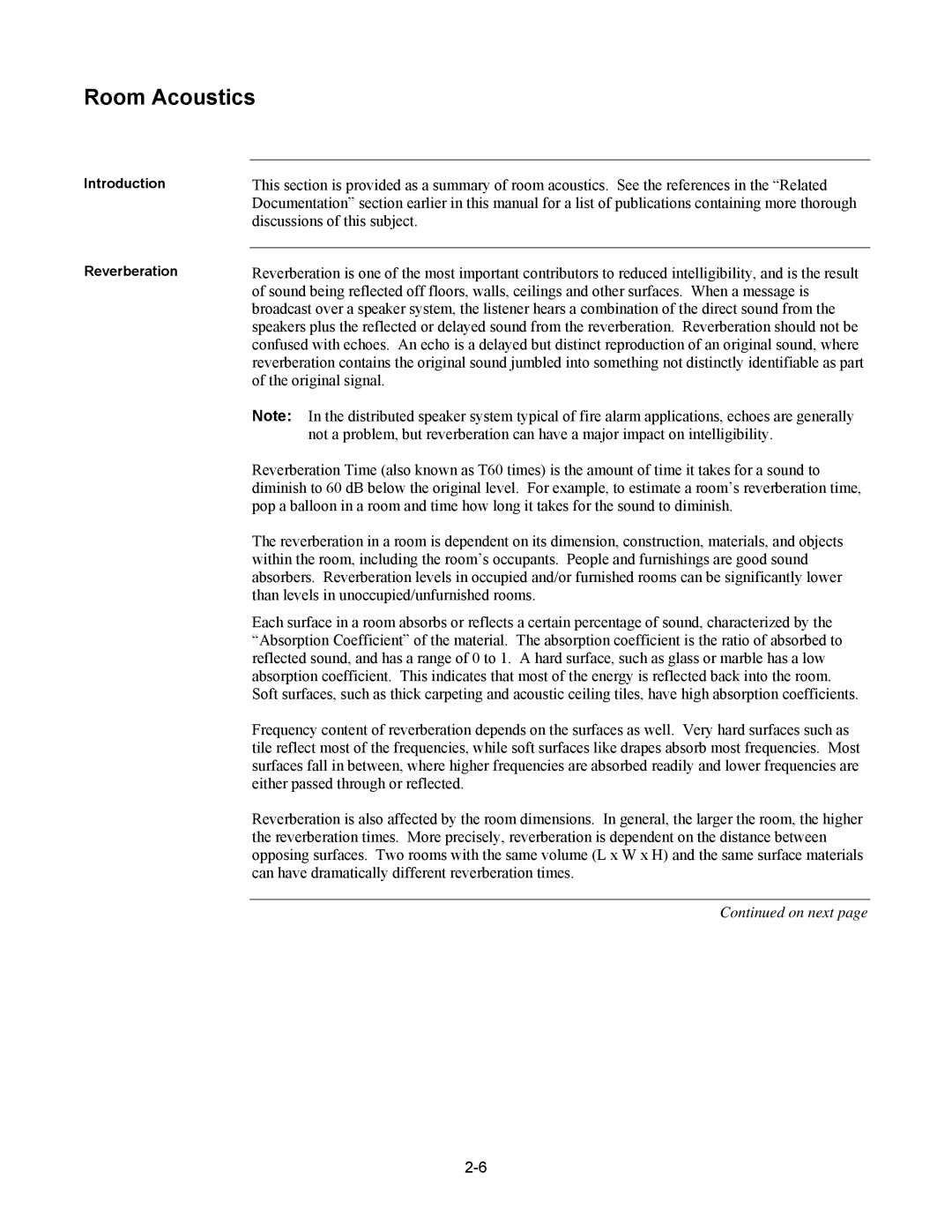
Room Acoustics
Introduction
Reverberation
This section is provided as a summary of room acoustics. See the references in the “Related Documentation” section earlier in this manual for a list of publications containing more thorough discussions of this subject.
Reverberation is one of the most important contributors to reduced intelligibility, and is the result of sound being reflected off floors, walls, ceilings and other surfaces. When a message is broadcast over a speaker system, the listener hears a combination of the direct sound from the speakers plus the reflected or delayed sound from the reverberation. Reverberation should not be confused with echoes. An echo is a delayed but distinct reproduction of an original sound, where reverberation contains the original sound jumbled into something not distinctly identifiable as part of the original signal.
Note: In the distributed speaker system typical of fire alarm applications, echoes are generally not a problem, but reverberation can have a major impact on intelligibility.
Reverberation Time (also known as T60 times) is the amount of time it takes for a sound to diminish to 60 dB below the original level. For example, to estimate a room’s reverberation time, pop a balloon in a room and time how long it takes for the sound to diminish.
The reverberation in a room is dependent on its dimension, construction, materials, and objects within the room, including the room’s occupants. People and furnishings are good sound absorbers. Reverberation levels in occupied and/or furnished rooms can be significantly lower than levels in unoccupied/unfurnished rooms.
Each surface in a room absorbs or reflects a certain percentage of sound, characterized by the “Absorption Coefficient” of the material. The absorption coefficient is the ratio of absorbed to reflected sound, and has a range of 0 to 1. A hard surface, such as glass or marble has a low absorption coefficient. This indicates that most of the energy is reflected back into the room. Soft surfaces, such as thick carpeting and acoustic ceiling tiles, have high absorption coefficients.
Frequency content of reverberation depends on the surfaces as well. Very hard surfaces such as tile reflect most of the frequencies, while soft surfaces like drapes absorb most frequencies. Most surfaces fall in between, where higher frequencies are absorbed readily and lower frequencies are either passed through or reflected.
Reverberation is also affected by the room dimensions. In general, the larger the room, the higher the reverberation times. More precisely, reverberation is dependent on the distance between opposing surfaces. Two rooms with the same volume (L x W x H) and the same surface materials can have dramatically different reverberation times.
Continued on next page
